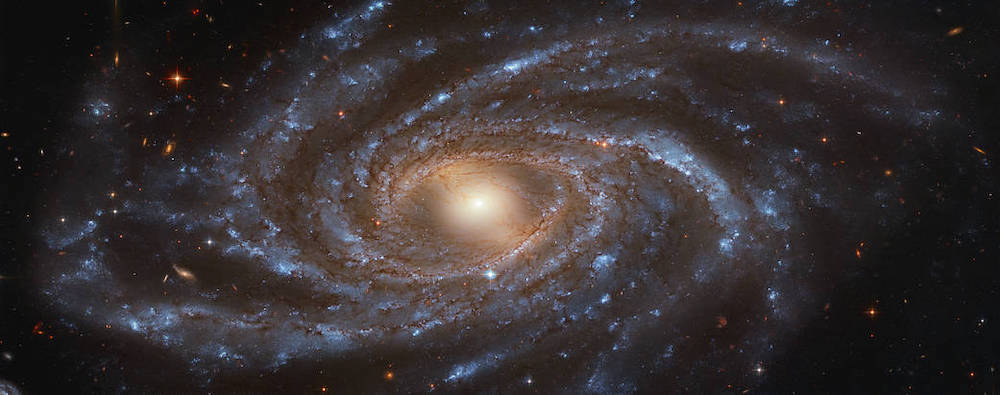Create a free profile to get unlimited access to exclusive videos, sweepstakes, and more!
Superpowers in space: super-radiation is the force behind powerful galactic superwinds
Galactic superwinds that were thought to come from supernovas are actually driven by UV radiation.

Human superpowers? Not in this universe, but cosmic superpowers are everywhere in the universe.
Even a mutant like Storm probably couldn’t conjure the superwinds that power through star-forming galaxies. It used to be thought the explosive power of supernovas drove winds this powerful — as in stronger than the surrounding gravity — but new research has found UV radiation that is blasted out from starbursts is actually behind them. It can even evaporate hydrogen that made the universe opaque when it first came into being.
Astronomers Lena Komarova and Sally Oey of the University of Michigan had doubts about supernovas generating superwinds when they observed the Mrk 71 region of galaxy NGC 2366 (above). This galaxy was much too young to have even experienced a supernova. Taking a closer look revealed that the winds were powered by ultraviolet light. Komarova and Oey led a study recently published in The Astrophysical Journal Letters.
“It is not so much the absolute strength of the radiation that matters as its relative value compared to gravity,” Komarova told SYFY WIRE. “The ratio of the forces of radiation to gravity depends on the ratio of cluster luminosity to that of cluster mass, and is maximized when you have a bright but less massive cluster like Mrk 71.”
Oey and Komarova were able to identify a UV-driven wind originating in MRK 71 by using spectral measurements that told them how the wind was moving depending on where it was in the star cluster. The distribution of gas ended up appeared exactly like they oddly have expected a wind structure to look. Slower gas was around the source (which happened to be the brightest star cluster). This cluster was also the center of the the structure, giving it away as the origin. The further away from the source, the higher the gas velocity, so the more the gas spreads out.
When the universe was first born, UV light evaporated hydrogen gas and sent it blowing furiously through the void. Hydrogen evaporates when UV photons strip electrons from hydrogen atoms, ionizing them. When UV rays impact dense hydrogen blobs, they transfer their momentum to the blobs, pushing them outward into space. Blobs of hydrogen need to be very dense to keep being accelerated because of constant evaporation. Some UV light escapes from between the blobs, accelerating them further and going on to evaporate hydrogen elsewhere.
“The very high velocity of the observed wind is due to this continual acceleration,” Oey also told SYFY WIRE. “This means that the wind must consist of a scattering of tiny hydrogen masses within a relatively empty volume — therefore allowing a lot of UV radiation to escape between them, and reach the farthest masses.”
When hydrogen is ionized, it becomes transparent and can no longer catch photons that accelerate it. This is what happened at the dawn of the universe. If you were around, you would have found it impossible to see anything because of all the opaque hydrogen. With the birth of the first stars, UV light shone on the hydrogen, gradually evaporating it until the universe became transparent. It is possible that he same process which accelerates galactic winds (and gradually evaporates the hydrogen in them) could have been happening in the nascent universe.
Escaped UV light continued to spread when the universe was still young. Though it was not associated with forming new galaxies, it could have irradiated and accelerated hydrogen in existing galaxies until it ionized that hydrogen again. Komarova and Oey are still trying to find out how UV light energetic enough to evaporate the universe can escape galaxies without being absorbed by hydrogen. Komarova thinks they are onto something by focusing on starbursts.
“Maybe active galactic nuclei (AGN) could be the sources of such radiation, or massive stars in starbursts, or something else,” she said. “There is evidence that suggests that starbursts could do this alone, and what we are trying to figure out is how.”


























